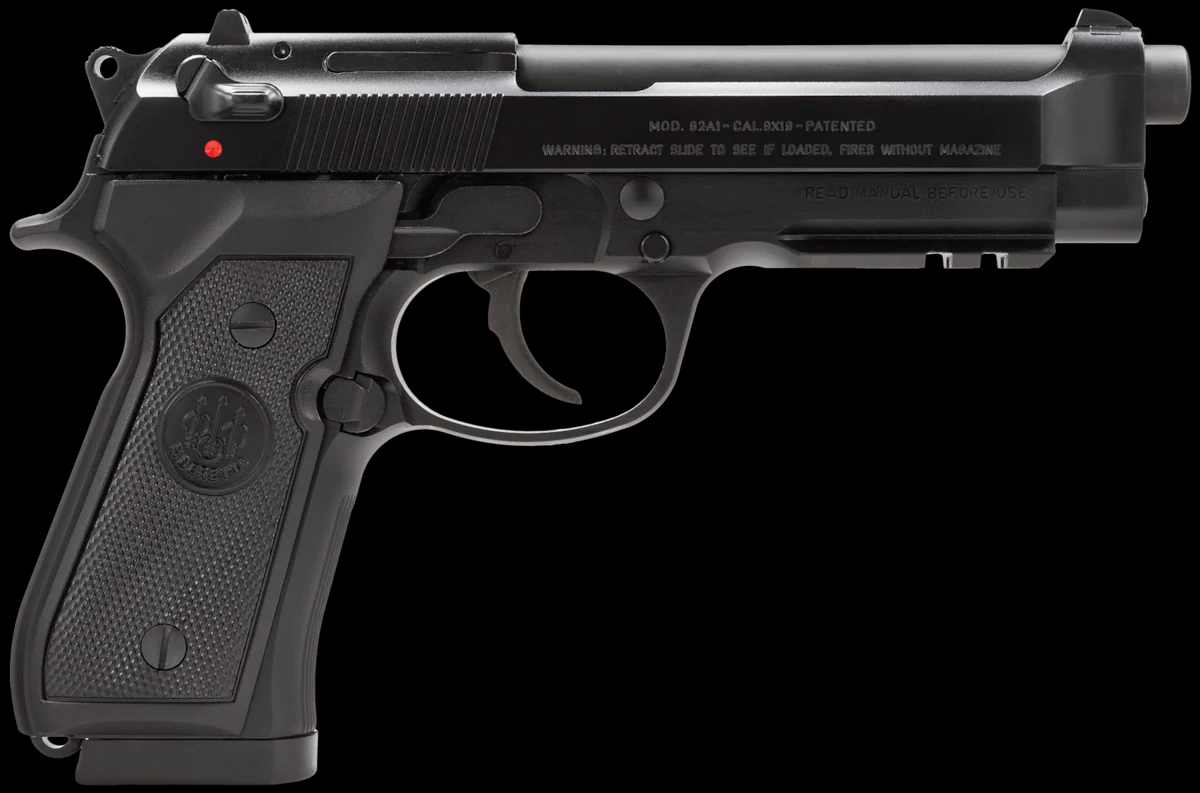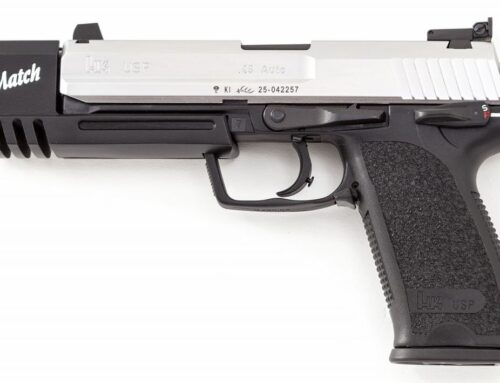The Beretta 92 series is nothing new. Chances are even those who aren’t into firearms have seen one somewhere on TV and may recognize them by their unique appearance. From the outside they all look about the same but there’s a curious branch of the series which has a bit more happening under the hood and is easily overlooked in a lineup. This oddity is known as the Model 92A1.
So, who here remembers that there .40 Smith & Wesson caliber! Good times, right? Beretta may want to forget those days as they didn’t have the best of luck when trying to update the Model 92 to more reliably feed the .40. For all of six years and I believe at a hefty development cost Beretta came out with the oddest duck of the series by far, the 90-Two. If this name seems quite awkward then you’ve positively identified one of this model’s shortcomings.
The 90-Two is a very peculiar but very unique entry to the series which incorporated features like a single piece “technopolymer” wraparound grip, a frame mounted rail, a rounded trigger guard, dovetailed front and rear sights, slightly redesigned controls, and a completely restyled slide. Mechanically it was identical to the 92 but it had a few extra tweaks inside. For the first time this style of pistol had a captive recoil spring. The slide was slightly thicker and heavier than standard 92’s. Then, thanks to the more stout .40 S&W on an aluminum framed handgun, they included a sacrificial “buffer” which came in a lovely blue color and nested around the back of the guide rod. Its sole purpose was to take the slide’s battering under recoil so the frame didn’t have to. When the part wore out you simply tossed the worn one into the garbage bin and dropped in a new one.
The 90-Two is the subject of its own article, if I can ever find one of these rare sidearms. However, their lineage reached beyond the uncomfortably named 90-Two and briefly mingled with the proper 92’s family tree. From this we have the 92A1 and the .40 caliber 96A1. Here is where it gets interesting… And even more confusing.
First is the matter of the 92 and M9. Normally these two sidearms are mechanically identical, one happens to meet military spec while the other does not. Then there’s the M9A1 which has a squared trigger guard and a different frame mounted rail. It would stand to reason that the M9A1 and 92A1 are likewise similar but they really aren’t. The 92A1 has much more in common with the 90-Two than any of the M9’s OR other 92’s.
Welcome to the land of confusion!
The 92A1 from the outside has its own profile compared to other Berettas. Current models with frame rails will have either a single notch or three notches while the 92A1 has two. Also unique to this model is a rounded undercut between the rail and the rounded trigger guard. On the flipside the button for the takedown lever is a circle rather than the standard 92’s oval and there’s a distinct rounded depression milled into the lower around where the trigger bar rests. Otherwise it’s just another Model 92. It uses the same grips, screws, hammer, trigger, safety, barrel and magazines as any other 92. Except that it isn’t the same.
The 92A1’s hidden secret is the heavier, thicker profile slide of the “built for .40 caliber” 90-Two. Many 92 aficionados are aware of the heavier Brigadier style slide but the 92A1 is the hidden third option. What makes it unique to the A1 and 90-Two series is the enlarged front lug which makes them incompatible with every other model of 92. Also directly copied over from the 90-Two is the captive recoil spring and sacrificial aluminum insert, still in its lovely cobalt blue finish. The front sight is also dovetailed but this feature has since made it into several other 92 models.
In essence, the 92A1 is the over-built 9mm of the family as, if I’m not mistaken, it shares everything with the .40 caliber specific 96A1 but with a 9mm barrel and magazine. The thing is, not only is this model incredibly easy to overlook in Beretta’s extensive 92 lineup but I don’t believe it’s made anymore. The A1 seems to be the unloved 92 because its heavier slide profile, unique frame rail and reshaped trigger guard meant it had almost no holster compatibility. After decades of the standard 92’s being available this one simply didn’t have a home. Further complicating matters for Beretta, by this time the .40 had all but completely fallen out of favor and everyone was switching back to the 9mm and thus sticking with the traditional 92’s. The 92A1 was almost obsolete before it reached the shelves.
Shooting the 92A1 offers very few surprises, they handle almost identically to the standard 92 with one notable exception. It’s difficult to describe but the A1’s recoil impulse seemed different. I would have expected it to feel softer since it was built around firing a more powerful cartridge but it rather felt more like the slide was bottoming out against that aluminum insert, like it had a more abrupt end of travel motion. It wasn’t uncomfortable by any means, more like a small catch which could easily be overlooked by most shooters. Otherwise it’s just another Beretta 92. The A1 comes standard with 17 round magazines which is a nice touch, this may have been one of the very first to offer a standard capacity higher than the original 15.
Disassembly is exactly the same as any other except you’re pressing a round button rather than an oval one (okay yes, not a true oval but I don’t know the right word for it.) The polymer recoil spring and guide rod are naturally easier to work with since you aren’t fighting against spring tension and won’t risk launching anything across the room. One really cool addition to the A1 can be found with reassembly. Normally on a 92 you’d fit the slide onto the frame then flip the takedown lever home. On the 92A1 all you have to do is rack the slide back and this lever flips back into place for you, thus eliminating the final step.
If you’re a Beretta collector or want a 92 which is just a little different from the norm (and aren’t too concerned about finding a holster) then the 92A1 might be worth setting your sights on. They do show up on the used market and were made within the last decade or two, although I doubt they were ever made in large quantities. Beretta may even still be making them in more limited batches as the model remains listed on their website, I’m not sure! Information on these handguns is a tad more limited and I get the impression Beretta has either quietly faded them out or is in the process of doing so. As far as I can tell the only parts incompatibility you’d run into are the slide, recoil assembly and the buffer insert but the latter two shouldn’t be impossible to find for maintaining a 92A1 or a 90-Two. Also if you’re curious and fortunate enough to find one, the 90-Two’s unique slide will drop right onto a 92A1 (and likely a 96A1) without a hitch.
But yeah, it’s totally still a Beretta 92.








